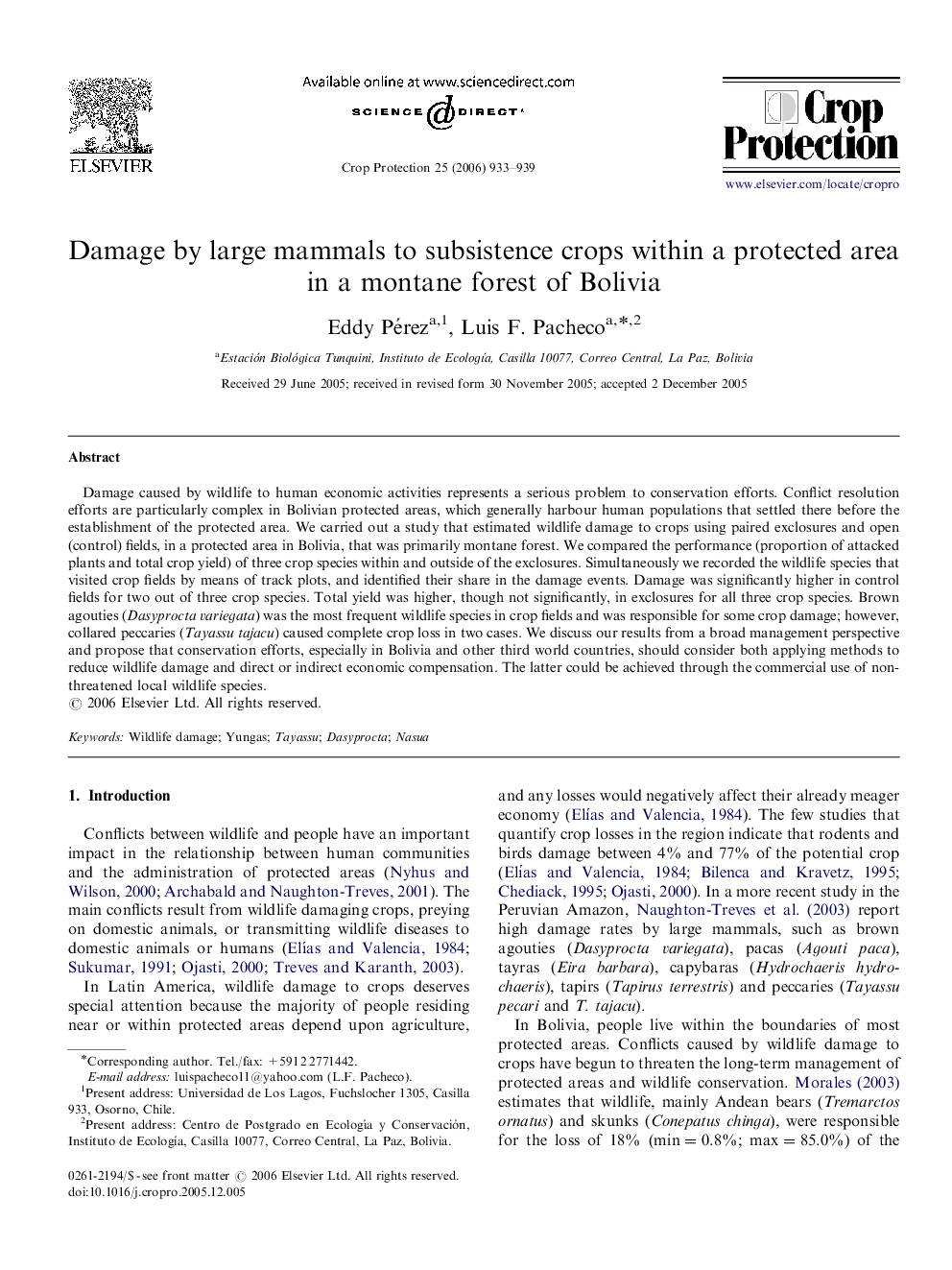| Article ID | Journal | Published Year | Pages | File Type |
|---|---|---|---|---|
| 4508072 | Crop Protection | 2006 | 7 Pages |
Abstract
Damage caused by wildlife to human economic activities represents a serious problem to conservation efforts. Conflict resolution efforts are particularly complex in Bolivian protected areas, which generally harbour human populations that settled there before the establishment of the protected area. We carried out a study that estimated wildlife damage to crops using paired exclosures and open (control) fields, in a protected area in Bolivia, that was primarily montane forest. We compared the performance (proportion of attacked plants and total crop yield) of three crop species within and outside of the exclosures. Simultaneously we recorded the wildlife species that visited crop fields by means of track plots, and identified their share in the damage events. Damage was significantly higher in control fields for two out of three crop species. Total yield was higher, though not significantly, in exclosures for all three crop species. Brown agouties (Dasyprocta variegata) was the most frequent wildlife species in crop fields and was responsible for some crop damage; however, collared peccaries (Tayassu tajacu) caused complete crop loss in two cases. We discuss our results from a broad management perspective and propose that conservation efforts, especially in Bolivia and other third world countries, should consider both applying methods to reduce wildlife damage and direct or indirect economic compensation. The latter could be achieved through the commercial use of non-threatened local wildlife species.
Related Topics
Life Sciences
Agricultural and Biological Sciences
Agronomy and Crop Science
Authors
Eddy Pérez, Luis F. Pacheco,
